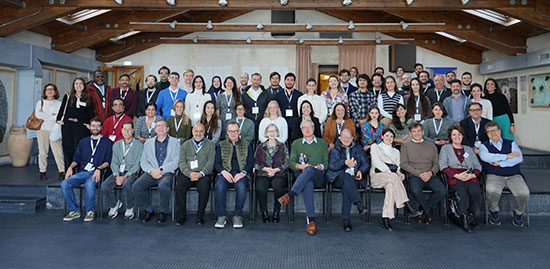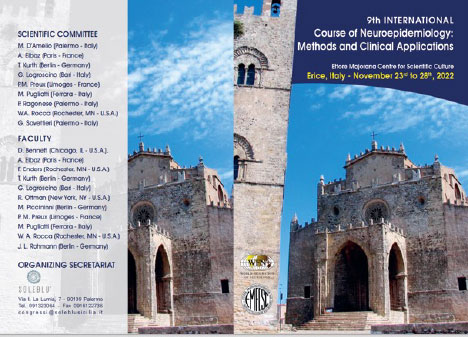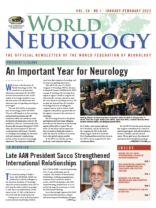By Dr. Carlos N. Ketzoian

Participants in the Ninth International Course of Neuroepidemiology: Methods and Clinical Applications.
Last November, the ninth edition of the International Course of Neuroepidemiology: Methods and Clinical Applications took place in Erice, Sicily, Italy, with the WFN’s endorsement.
An historical first course of neuroepidemiology was held in San Miniato, Pisa, Italy, in 1981, and was organized by Prof. Bruce Schoenberg.
Prof. Schoenberg passed away six years later. He laid the foundation for the development of neuroepidemiological research in different continents as a legacy. The activities that he promoted were oriented both to support researchers and to prioritize the training of human resources in this area of knowledge.
Almost 20 years after these historical events, Professors Walter Rocca (Mayo Clinic, Minnesota, U.S.) and Giovanni Savattieri (University of Palermo, Italy) resumed the training activities pioneered by Prof. Schoenberg. Starting in 2000, the nine offerings of the “International Course in Neuroepidemiology: Principles and Clinical Applications” in Erice, have become an essential point of reference for those of us who are interested in the subject.
Over the years, the structure, thematic content, and methodology have evolved in order to adapt to the new needs of a changing international public and to the new methodological developments.

Flyer of the Ninth International Course of Neuroepidemiology: Methods and Clinical applications.
Professors Paolo Ragonese and Marco D’Amelio from the University of Palermo, Italy, who participated as students in the 2000 course, are the current coordinators. The course has a Scientific Committee and a Teaching Team, including more than 15 worldwide leaders in neuroepidemiology and other related sciences. It is a high-level full-immersion course where participants share five days of training, exchange experiences, and establish professional collaborations that go beyond the course.
Forty-six students from five continents participated in this Ninth International Course of Neuroepidemiology: Methods and Clinical Applications” in Erice 2022. Methodological aspects of neuroepidemiology were discussed in the morning, and applications of the methods to the study of specific neurological diseases were presented in the afternoon (epilepsy, dementia, Parkinson’s disease, stroke, multiple sclerosis, neurological manifestations of COVID, among others). General concepts of genetic epidemiology and of applied statistics complemented the epidemiologic methods essential for neuroepidemiology.
The infrastructure of the Ettore Majorana Foundation Centre for Scientific Culture provided a unique framework to achieve the aims. As we climbed the winding road that took us up Mount San Giulano to Erice, a medieval city, the air became fresh and the landscape splendid. Cloistered for a week in this inspiring environment, we felt invited to expand our knowledge as if we were part of a renaissance movement in neuroepidemiology.
The current coordinators, Professors Paolo Ragonese and Marco D’Amelio, organized a special tribute to Professors Walter Rocca and Giovanni Savattieri in recognition for their work in establishing the Erice courses and for their commitment to the development and the diffusion of neuroepidemiology. The Erice courses have become one of the points of reference for the training of young neurologists in clinical and epidemiological research. •
Dr. Carlos N. Ketzoian is chairman of the Specialty Group on Neuroepidemiology of the World Federation of Neurology.
Reference:
- Walter A. Rocca, Paolo Ragonese, Marco D’Amelio, Giovanni Savettieri (2022) Teaching Research Methods to Young Neurologists: The Erice International Courses. J Mov Disord 2022;15(3):227-231
